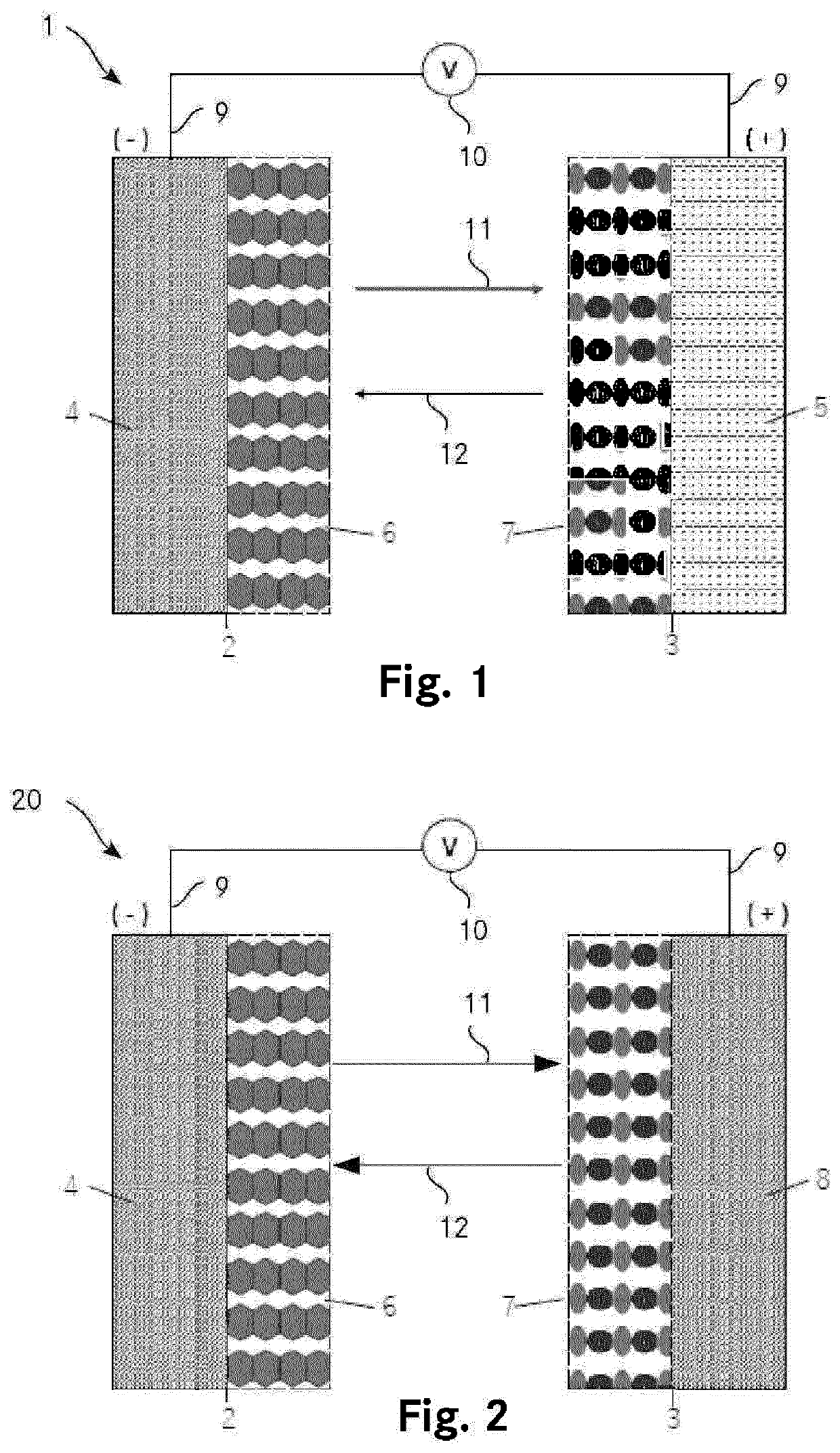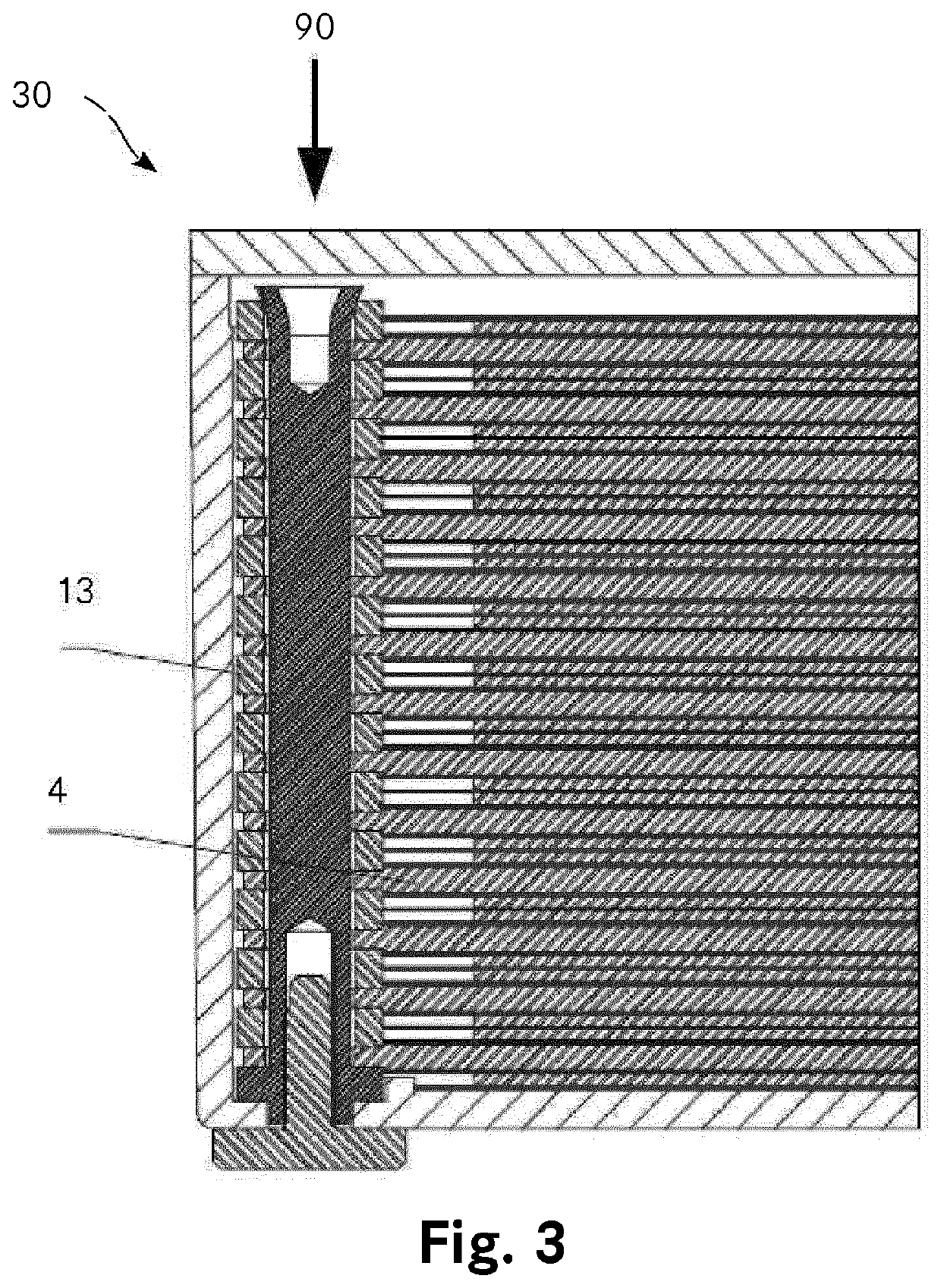Rechargeable battery
a rechargeable battery technology, applied in the field of batteries, can solve the problems of over-discharging the battery, increasing damage irreversibly the battery performance, so as to reduce the risk of internal short circuits, increase the lifetime, and ensure the effect of mechanical stability and/or strength
- Summary
- Abstract
- Description
- Claims
- Application Information
AI Technical Summary
Benefits of technology
Problems solved by technology
Method used
Image
Examples
Embodiment Construction
[0066]FIG. 1 shows an embodiment of a battery 1 comprising a lithium ion rechargeable battery cell. Battery 1 comprises a negative electrode 2. The negative electrode 2 comprises a negative current collector 4 made of an electrically conductive non-metallic structural material. The negative electrode 2 further comprises a negative active material 6, for example carbonaceous material. The negative current collector 4 and the negative active material 6 are electrically connected. The negative current collector 4 is further connected to a contacting fixture 9, which is finally connected to a load or charger 10. Battery 1 further comprises a positive electrode 3. The positive electrode 3 comprises a metallic positive current collector 5. For example, the metallic positive current collector 5 is made of aluminium. The positive electrode 3 further comprises a positive active material 7, as for example LiCoO2 or LiFePO4. The battery 1 comprises also a lithium electrolyte (not shown) which ...
PUM
| Property | Measurement | Unit |
|---|---|---|
| volume | aaaaa | aaaaa |
| voltage | aaaaa | aaaaa |
| electrical conductivity | aaaaa | aaaaa |
Abstract
Description
Claims
Application Information
 Login to View More
Login to View More - R&D
- Intellectual Property
- Life Sciences
- Materials
- Tech Scout
- Unparalleled Data Quality
- Higher Quality Content
- 60% Fewer Hallucinations
Browse by: Latest US Patents, China's latest patents, Technical Efficacy Thesaurus, Application Domain, Technology Topic, Popular Technical Reports.
© 2025 PatSnap. All rights reserved.Legal|Privacy policy|Modern Slavery Act Transparency Statement|Sitemap|About US| Contact US: help@patsnap.com


